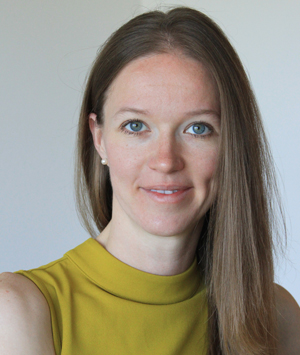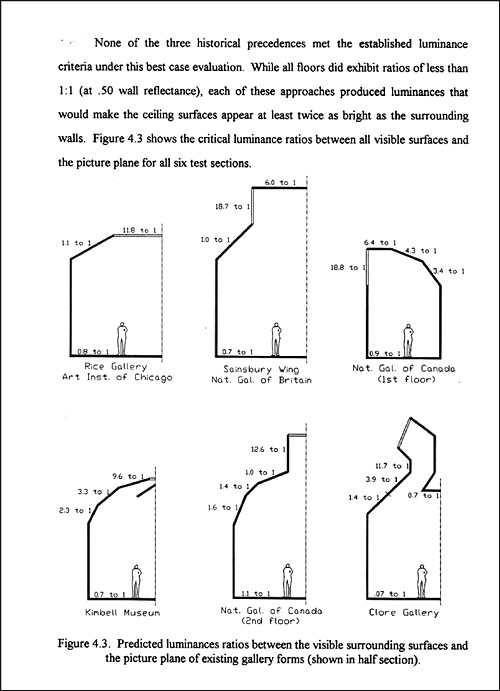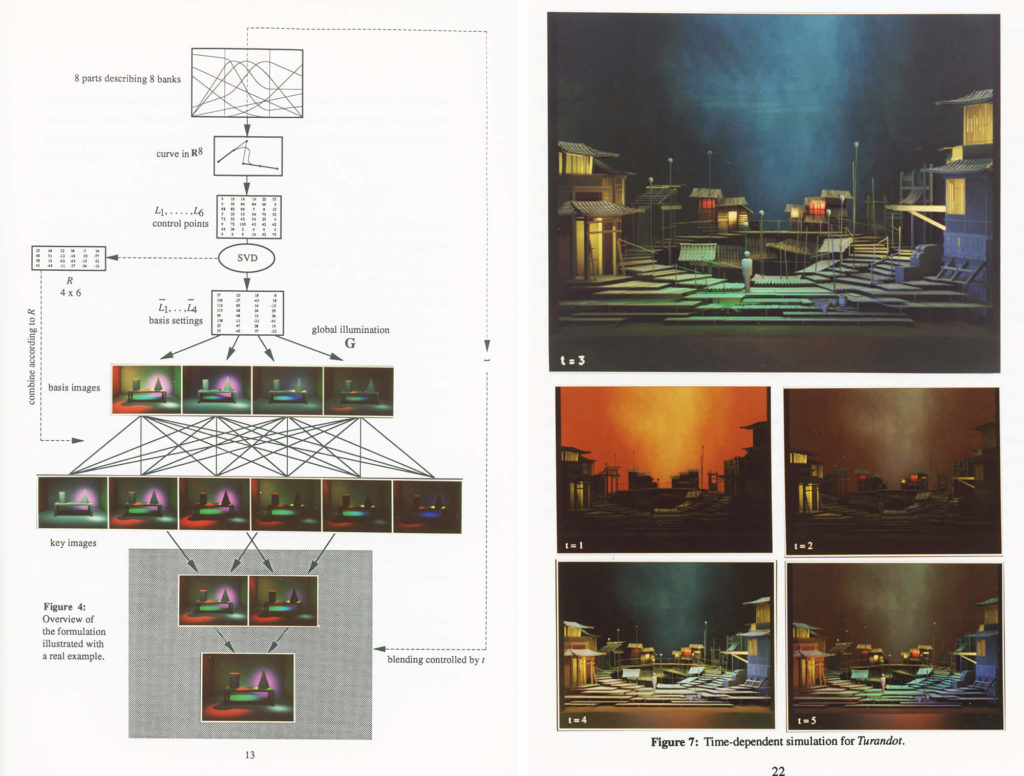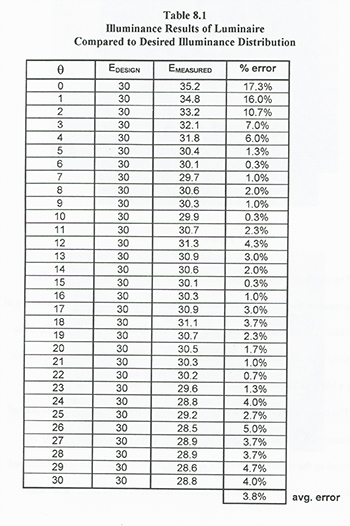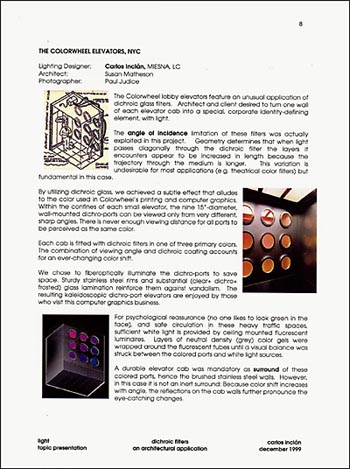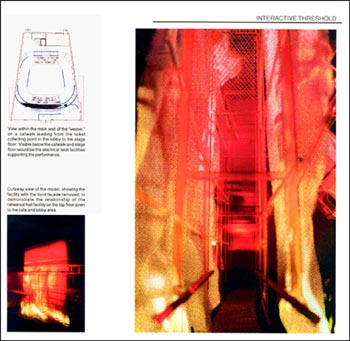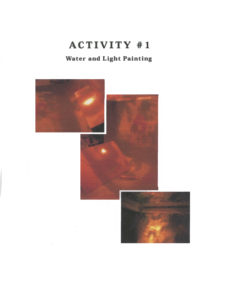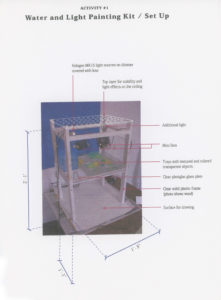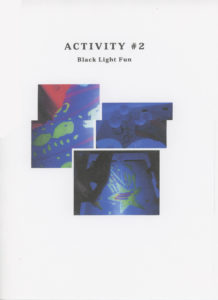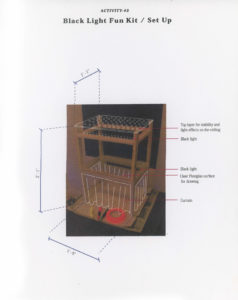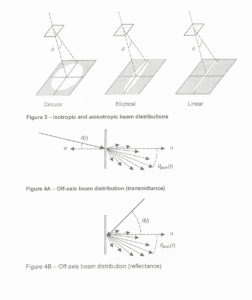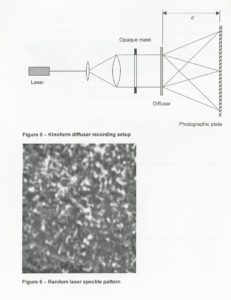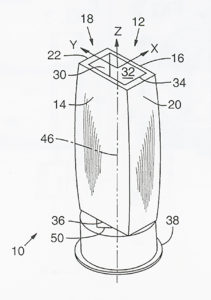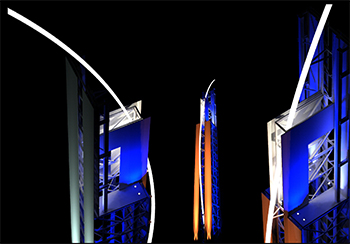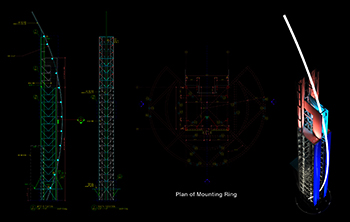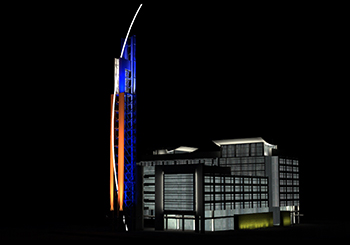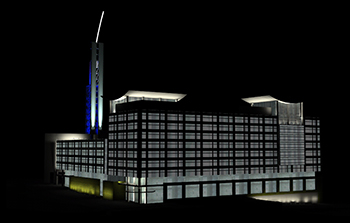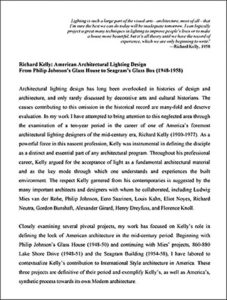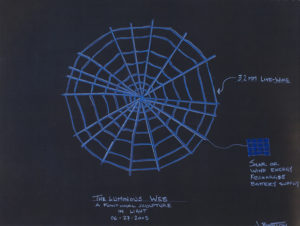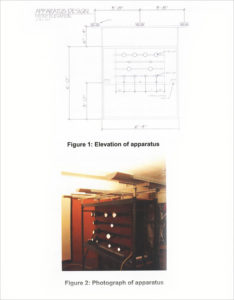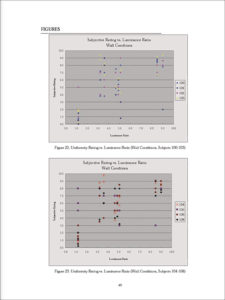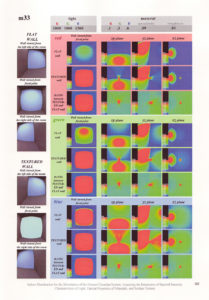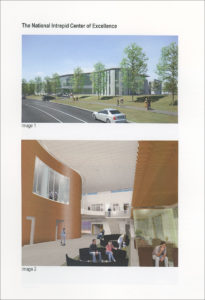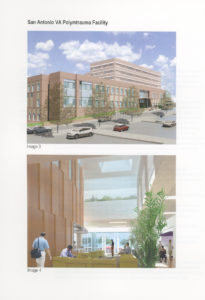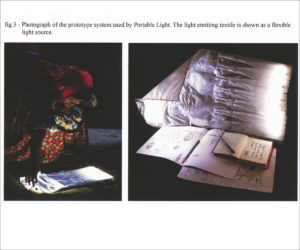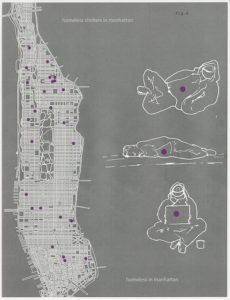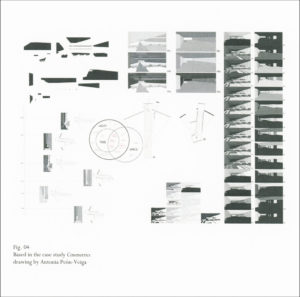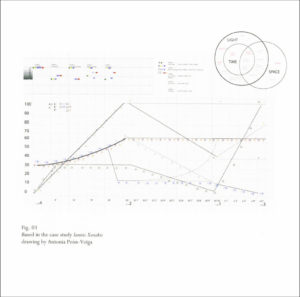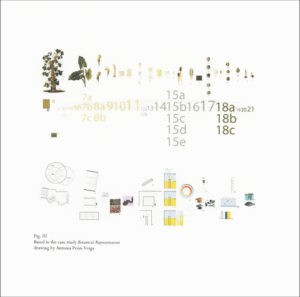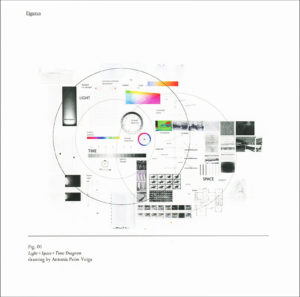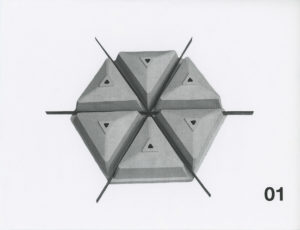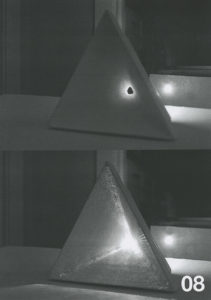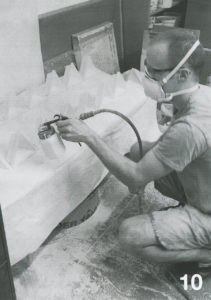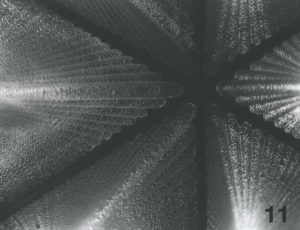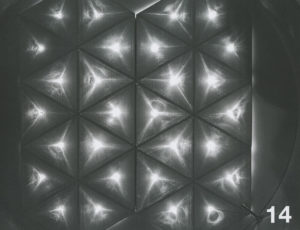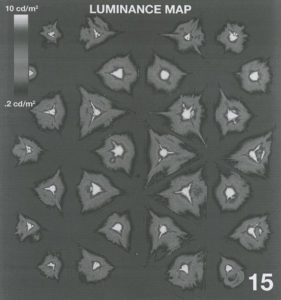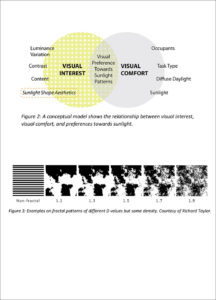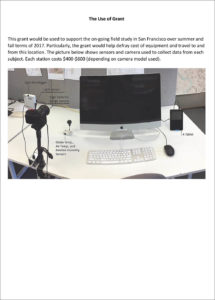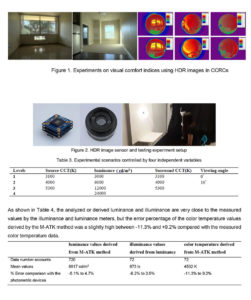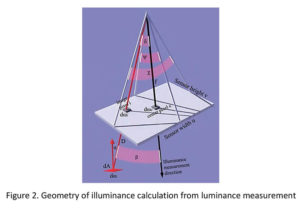1985
1985
Markus Earley
Chandeliers for the Atlantic City Convention Center
In 1985, Markus Earley became the first recipient of the recently re-named Richard Kelly Grant. He was 25 years old. The grant had come under he auspices of the IESNA, and the age limit was raised to 35, where it remains today. Markus’ entry included the design of custom multifunction chandeliers for the Atlantic City Convention Center, a project he did in Howard Brandston’s office.
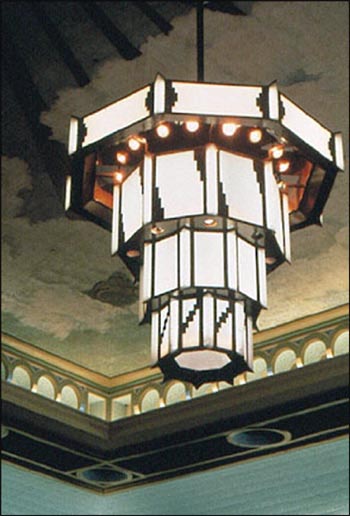
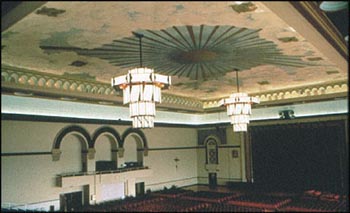
What Mr. Early is doing now
Markus Earley’s career has remained in lighting, working as a lighting designer, teacher, product development designer for Lightolier, and now once again a design consultant.
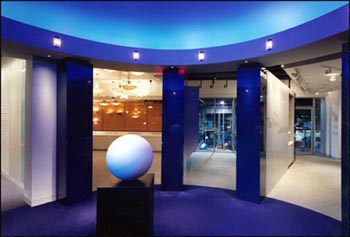
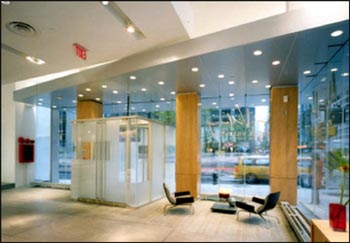
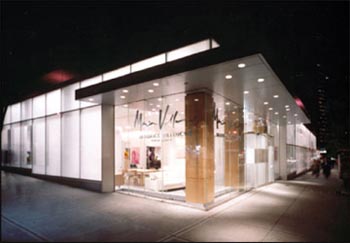
1987
1987 Recipient
Clay Belcher
A Model for the Posssible Effects of Light on Decision Making
Mr. Belcher submitted a thesis he had written on the effects of light on decision-making.
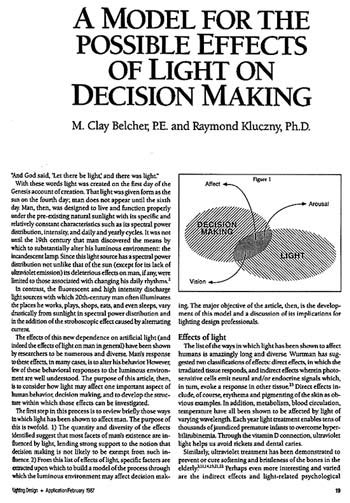
What Mr. Belcher is doing now
Mr. Belcher stayed at the University of Kansas for twenty years and helped develop an interdisciplinary teaching program which has taught lighting to hundreds of architecture and engineering students.
1987 Recipient
Trish Flemming
1988
1988 Recipient
Robert Singer
Light Sculpture – Café Iguana, NYC
In 1988, Robert Singer won the Grant for his creativity in designing a light sculpture in the form of an oversized iguana, as part of his design for the Café Iguana in New York.
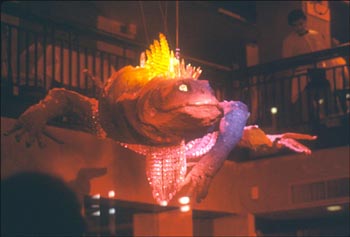
What Mr. Singer is doing now
Mr. Singer is the principal of Robert Singer & Associates, in Aspen Colorado. He has received, among other awards, a 2002 IESNA Illumination Design Award of Merit for a residence in Colorado that was featured on the cover of LD+A.
1988 Recipient
Christopher Freeman
1989
1989 Recipient
Matthew Tanteri
Portfolio Using Lasers, Neon, and 3-D Projections
In 1989, Matthew Tanteri received a Grant based on a portfolio of current works using lasers, neon, and 3-D projections. He used the Grant funds to develop another project, which won a Lumen award the following year.
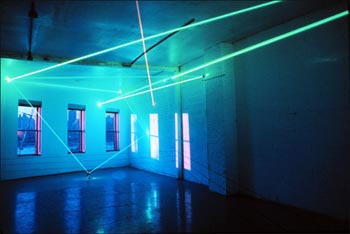
What Mr. Tanteri is Doing Now
Mr. Tanteri continues to produce exceptional, award-winning projects inspired by Kelly’s work combining daylighting and electric lighting sources.
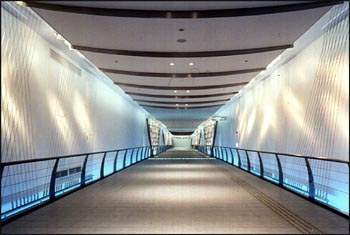
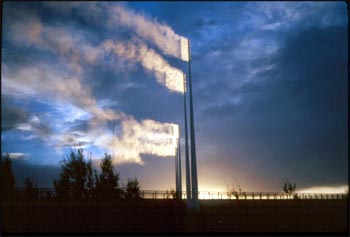
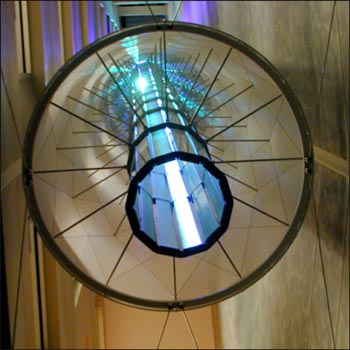
1989 Recipient
Douglas Grove
Light Pipe Development
In 1989, Douglas Grove, who at the time was a lighting designer at Lightolier, received a Grant for his 1988 undergraduate project at Perdue University which consisted of research and development of Light Pipe.
He conducted an in-depth study of the optical characteristics which were engineered into the Light Pipe. Both 3M Scotch Lamp Film and TIR Systems, Ltd., .25” thick acrylic sheets were utilized in a series of concepts that used the light material to perform tasks other than suggested by the manufacturer.
What Mr. Grove is doing now
1990
1990 Recipient
Scott Hershman
The Use of Prism Light Guides
Mr. Hershman received his Kelly grant for the work he did on his masters thesis, concerning the use of Prism Light Guides. After his thesis presentation, his boss at the time, Jules Fisher was intrigued, and asked if he could use these techniques to design a 40’ wide staircase that was illuminated, could change color and retract into itself. Mr. Hershman said it was no problem and designed the stairs that would become the major scenic element for “Will Rogers Follies”. Mr. Fischer won a Tony Award for the lighting design.
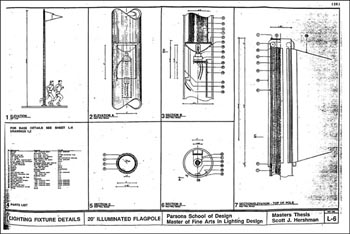
What Mr. Hershman is doing now
Mr. Hershman has worked on scores of projects here and abroad, many of which have gained the recognition of the national and international design community.
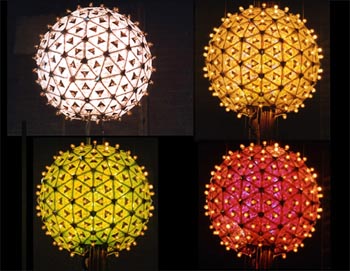
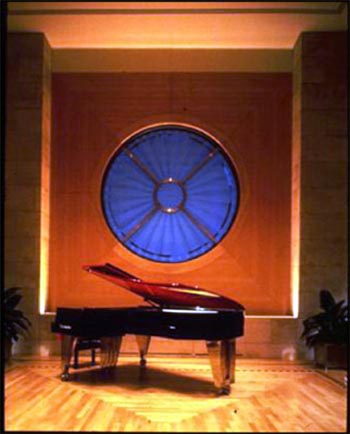
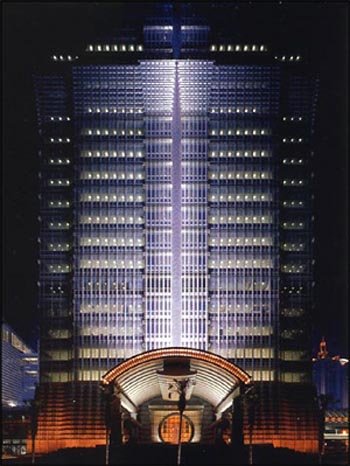
1990 Recipient
Jennifer Veitch
Jennifer Veitch, of the Department of Psychology of the University of Victoria, British Columbia won a grant for her dissertation in environmental psychology. She was investigating the influence of various types of lighting and control or lack of control that lighting plays in affecting performance and mood of a worker in an office environment.
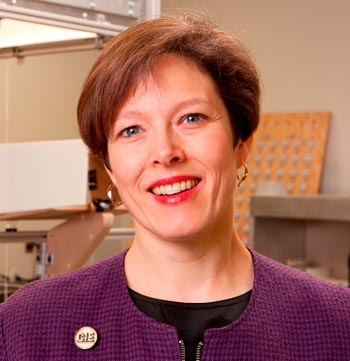
What Ms Veitch is doing now
Principal Research Officer at National Research Council of Canada.
Visit: researchgate.net/profile/Jennifer_Veitch(opens in a new tab)
1990 Recipient
George Boyle
Conversation with the Sun: An Architecture of Shadows
George Boyle received his Masters of Architecture at the University of California in Berkeley. He received a Grant for his work with light and shadow.
His work attempted an understanding of the behavior of shadow by letting the sun intercept an object and recording its conclusions. Models are placed over light sensitive, diazo blueprint paper and exposed to the sun and sky at different times and conditions.
The goal was to extend the perception of the shadow beyond a two-dimensional image and actually build what forms that image—the body of the shadow—so that the shadow will become an intention rather than a result. It wasa search for form inspired by a phenomena.
What Mr. Boyle is doing now
1991
1991 Recipient
Clara Drevon Powell
Ms. Powell’s submission was part of her thesis project. The work, which consisted of photos of an object lit in a wide variety of ways, demonstrated that lighting greatly influences the meaning derived from an object or situation and showed that the lighting of objects conditions our reading of them.

1991 Recipient
George Lee Zimmerman
George Lee Zimmerman proposed using the phenomenon of “equiluminescence,” which slows the perception of motion as an element of design in a dance piece. To produce equiluminescence, a subject and its background are lit with two different colors of light which are equal in value and intensity. The absence of light/dark contrast essentially bypasses the eye’s black/white sensors—which are the most effective sensors in perceiving motion — and utilizes only the color sensors which are slower at transmitting the perception of motion to the brain. George intended to collaborate with Gail Gilbert, a dance choreographer in the design of the final piece. The goal is two-fold: to produce work to be shown publicly and to further the understanding of motion perception.
1991 Recipient
Suzy Soffler
Light Generated Environment
The “Light Generated Environment” project used light as a major element which helped to determine the design of an architecture space. Light and form are considered together from the very beginning of the design process. Suzy did experiment with materials and simple structures to discover how forms and materials interact with light. She then went on to design a passage between the rooms which use light to enhance some architectural forms to modify the perception of space by visually expanding a section of the room and give graphic interest throught the use of colored surface pigment, projected colored light shapes, and illusion of transparency. Final design has been built full scale at Pratt Institute.
Suzy was a student of Pratt Institute.
1992
1992 Recipient
Hank Forrest
Color of Daylight
Mr. Forrest’s project was for a research thesis on the effects of air pollution on the color of daylight.
Hank Forrest’s thesis attempts to determine if air pollution and moisture have any impact on the color of daylight. He supplemented existing data with an experiment involving the recording of 189 color measurements at the same location as an air pollution control monitoring station. Through his process, he hoped to bring a better understanding of color and daylighting to the lighting designer and encourage the expanded use of, and appreciation for, these vital subjects.
Mr. Forrest graduated from the University of Buffalo, worked ten years as a lighting and technical consultant to the photography and advertising industries. In his fifth year with Jules Fisher and Paul Marantz, Inc. “The Color of Daylight” marked the completion of his Masters of Fine Arts degree at Parson School of Design

What Mr. Forrest is doing now
Mr. Forrest is now a Senior Associate Principal at Fisher Marantz Stone. He notes that the research he did for the Grant profoundly changed the way he sees objects and color, which has proven quite useful on his many lighting design projects.
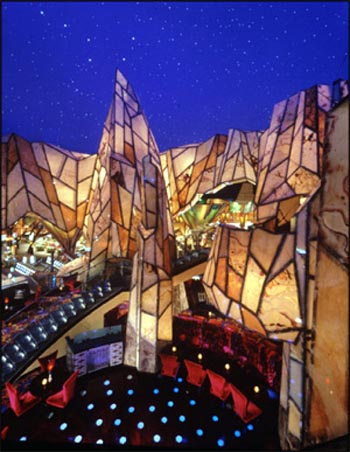
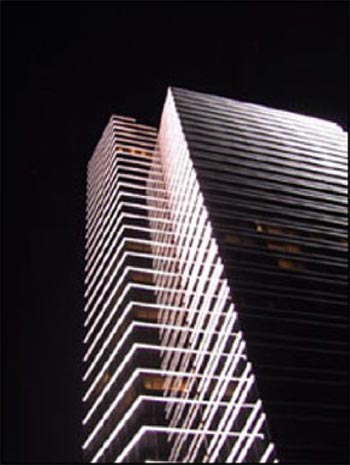
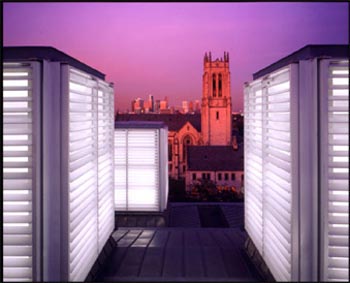
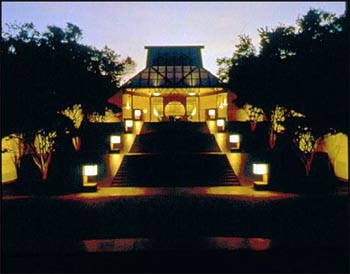

1992 Recipient
Tina Fong
Housing for Insomniacs
Tina Fong from Hughes, AK, pursued her first degree at The Cooper Union in New York City and then attended the School of Architecture.
Her project involved the housing of four insomniacs where sleeping, counseling and eating may occur. Her investigation encompassed the relationship of the differing times of the day—daylight, twilight, and moonlight— to the differing cycles of the human consciousness—conscious, half conscious, and unconscious. Study models, candle studies, and drawings were used to study three different kinds of planes and their conditions of enclosure with the differing times of the day. The insomniac would come into contact with light on the surface, a kind of milky bloom; light in corners, where spaces show their edges; and light through space, giving edges a change of color.
The goal was to allow light to enhance substance as opaque and space as transparent, to give light a horizon and to detach the dark from dark.
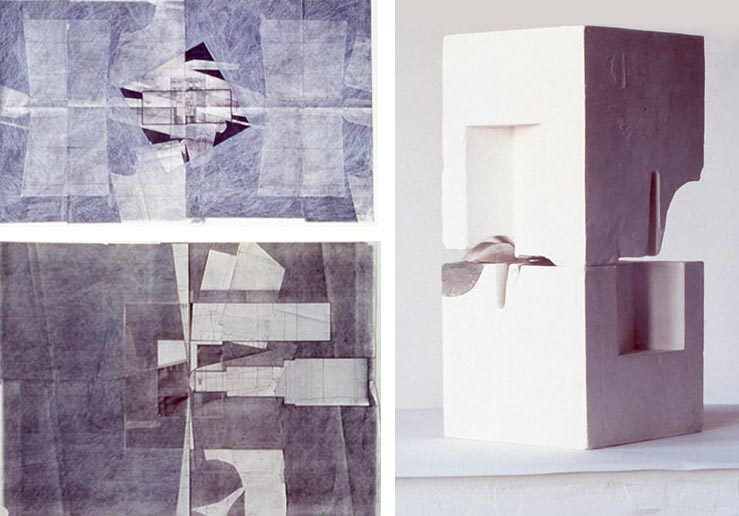
1992 Recipient
Carrie Meinberg Berke
The Shadow Room—The Construction of the Subject (The Eclipse of the Object)
Carrie is an architect and artist from Guilford, CT and received a master of architecture from Yale University. While at Yale, she explored the relationship between light and perception in architecture. Her winning installation involved the design of an object which is calibrated to transform its reading at dawn and twilight, engaging both natural and artificial light. The thesis of the project is to disrupt the conceptual relationship between light and shadow and form, and to speculate into the dynamics of the human subject and object.
During the day, both the object and its shadow appear random and fragmented. At night and artificial light source casts a precise and orthogonal “shadow room:. During this alignment, or eclipse, attention is drawn to this recognizable image. The shadow remains unchanged until the light of the day overtakes its form.
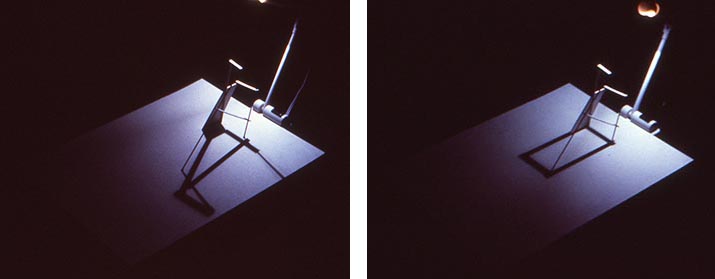
1993
1993 Recipient
Melissa Gould
Floor Plan
Melissa Gould received a grant for “Floor Plan,” a conceptual Holocaust memorial installation in light that used the floor plan of a destroyed Berlin synagogue as the basis for a life-size “walk-in: blueprint drawing. Floor Plan was composed of 110 fluorescent lights set slightly below ground level on the grassy banks of the Danube River as part of Ars Electronica Festival-Linz, Austria, 1991.
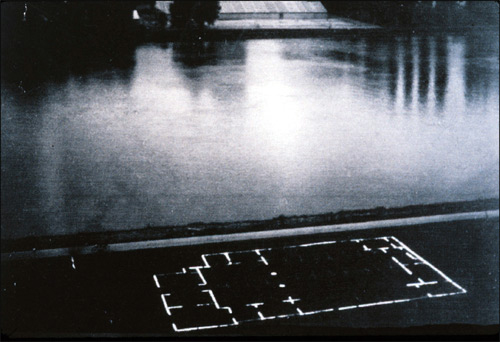
1993 Recipient
Timothy Ostebo
Timothy received a Grant to promote the environmental and economic benefits of energy efficient lighting through the study of lighting upgrades and the retrofit process. His Masters thesis project was in progress at the University of Idaho and is a promotion of the Environmental Protection Agency’s Green Lights Program.
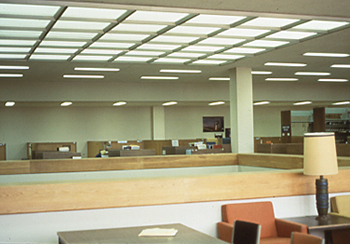
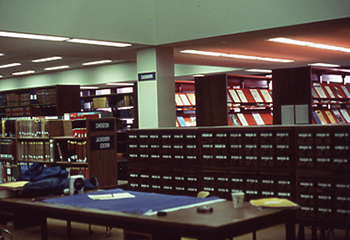
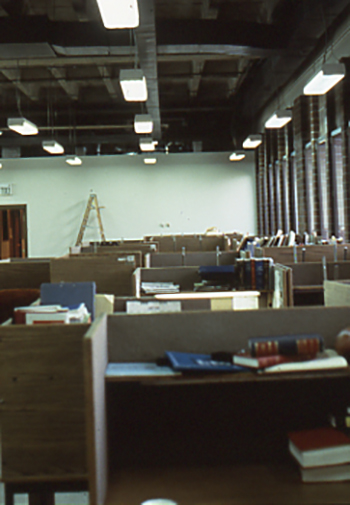
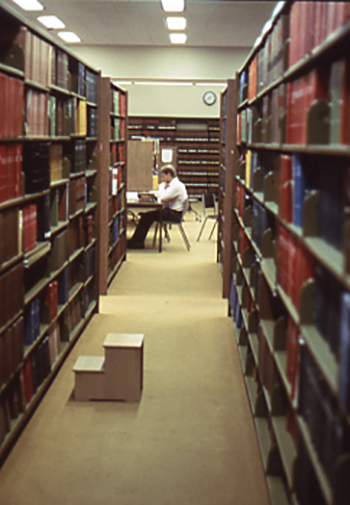
1993 Recipient
Sarah Tomlinson
Sarah received a grant for her installations which explore how one’s perception of interior space is shaped by light sources and the play of light contained. Her proposed video installation “24 hrs.” questions both the subjectivity of the viewer and their ability to assimilate and process their perception of light over time.
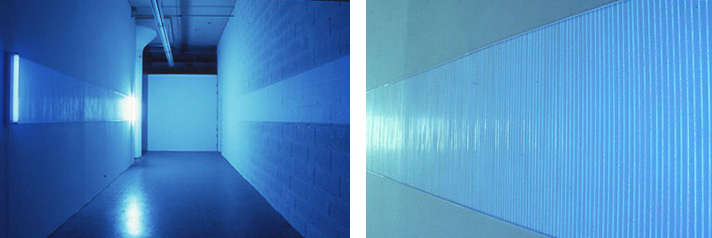
1993 Recipient
James Koster
Redeemer
James received a grant for “Redeemer,” a floor lamp illuminated by lifting a glass and aluminum “icon” from its mahogany pedestal into an aluminum and plexiglass altar. Koster explored metaphorical associations of light and illumination by iconoclastically colliding cultural and religious iconography with erotic and biomorphic imagery.
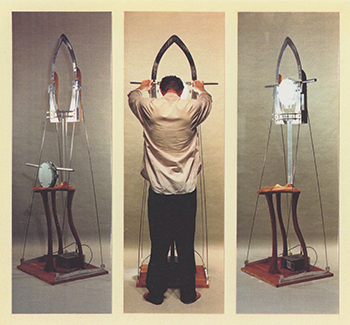
1994
1994 Recipient
Steven Hefferan
A graduate of the University of Colorado at Boulder, received a grant for developing a mathematical modeling tool to analyze the use of daylight in museum and gallery spaces. His method uses a luminance-based criteria to evaluate and maximize the impact of building form with the performance of a daylight delivery system.
Click on image for larger view
What Mr. Hefferan is doing now
Mr. Hefferan, who is now principal of his own firm in Boulder, specializes in museum lighting, especially daylighting and conservation problems. One of his projects included working on the daylighting/exhibit lighting design issues of the renovation of the Kahn Wing at the Yale University Art Gallery.
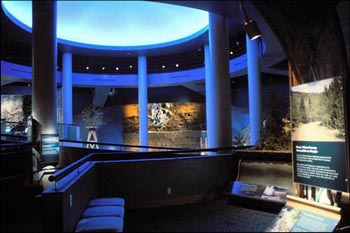
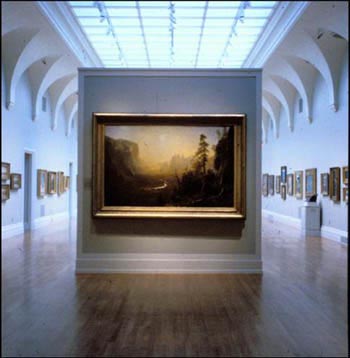
1994 Recipient
Karl Ciesluk
Sun Works & Reflective Fish Series
Karl Ciesluk, an artist from Ontario Canada received a grant for his environmental light works which incorporate natural elements such as sunlight, water, vegetation and rock cliffs. He planned to use his grant to continue his “Sun Works” & “Reflective Fish Series.” As part of the latter body of work he planned to travel to St. John, Newfoundland and use small beached ice bergs to create half-fish forms, which are completed by their reflections in water.
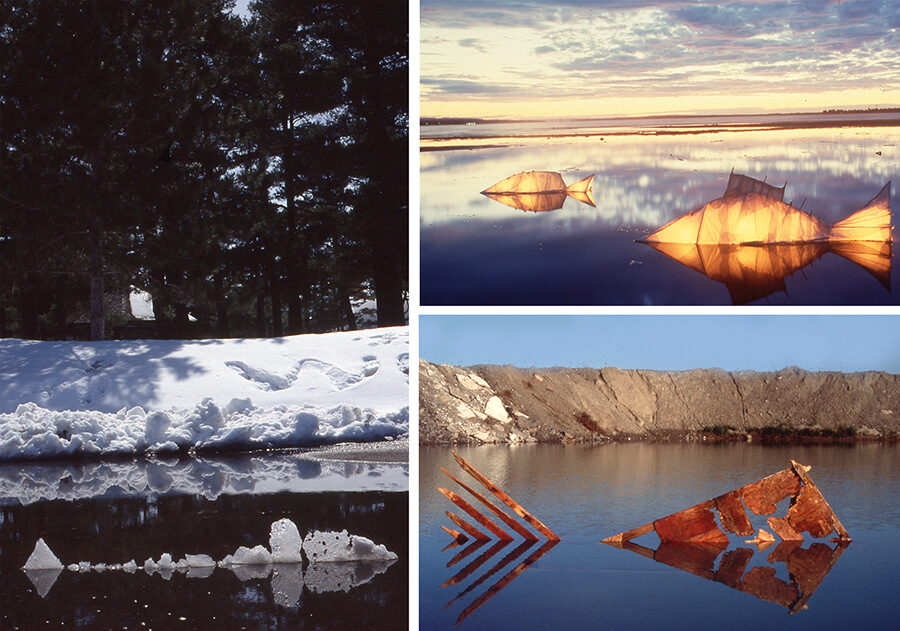
1994 Recipient
Kurt Levens
Lighting A Building with A Single Bulb
Kurt Levens received a grant for his MIT Building Technology Master’s Degree thesis entitled “Lighting A Building with A Single Bulb: Toward a System For Illumination in the 21st Century. His research explores a centralized lighting system for buildings which could cut lighting related consumption to one-half, provide continuous spectrum light and eventually include piping of sunlight and solar heat to further offset electric load.
1995
1995 Recipient
Julie Dorsey
Ms. Dorsey’s received a grant for her research on new computer graphics techniques applied to opera lighting and projection effects. As part of her doctoral thesis in Architecture at M.I.T., Dorsey demonstrates the potential for the use of computer graphics in stage lighting. Her research explores light source specification and simulation, modeling of scenic projection systems, an inverse technique for lighting visualization, and an approach for the design and preview of time-dependent intensity variations.
Click on Image to view larger version
1995 Recipient
Suikang Zhao
Fluorescent Pamphlets
Suikang Zhao, a Chinese born artist based in Brooklyn, NY received a grant for his multi-media work which uses electric light as a metaphor of transformation and interaction. His “Fluorescent Pamphlets” and related installations incorporate book pamphlets and symbols of multiculturalism such as Buddhist, Islamic, Judaic, and Christian religious texts or images. In the midst of chaotic ambiguity created by the overlapped texts, images and fluorescent lights a unique word emerges, taken out of its context.
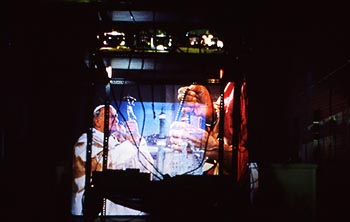

1995 Recipient
Keith W. Starnes
Keith Starnes, a graduate of Clemson University, South Carolina, received a grant for his study of natural illumination in the work environment of rehabilitation hospitals, and the performance and perceptions of physical and occupational therapists in these hospitals based on lighting. Starnes research project is based on the evaluation of three existing rehabilitation hospitals. It focuses on the development of a daylighting model that outlines recommended strategies for the inclusion of daylighting into a work/treatment area for therapists.
1996
1996 Recipients
Liisa Roberts
Betraying A Portrait
Liisa Roberts received a grant for her creative use of light. Her work took place in an apartment which is also an art gallery. It was comprised of one black and white slide projection and two silent 16mm film projections. During the greater part of gallery hours, while slides were projected, no image was visible due to the darkness of the of the project image and the brightness of the daylit room. While at the beginning of the exhibition, car lights and street lights mingled with and mirrored the projections, as time passed, the projected images became increasingly faint as sunset later and later and the room became dark.

1996 Award of Merit for Research and Analysis
Gregory Terch
Tailored Edge-Ray Design of Specular Reflectors for Constant Luminance Cylindrical Sources
Gregory received an Award of Merit for his thesis work on the design of luminaire reflectors and the issues involved. His research included both optical design and radiative transfer for light calculations. His research was significant as it improved the accuracy and computation time of lighting calculations which in turn enhances design and presentation tools used throughout the industry. His work created new reflector design procedures that offer improved optical control, increased efficiency, and reduction in glare. In addition his work created new optical design procedures that are applicable to numerous and diverse sources and will eventually establish a marriage between optical design and radiative transfer for the design of reflectors with diffuse and non-diffuse reflecting materials.
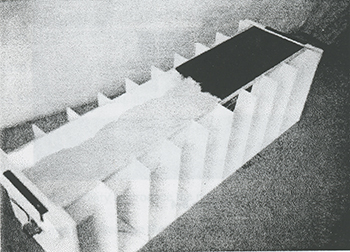
Click on Image for larger view
1997
1997 Recipient
Seth Riskin
In 1997, Seth Riskin received a Grant for his use of light in performance art. In 1987 he first developed the “Light Dance” art form as a graduate student at the M.I.T. Center for Advanced Visual Studies. Seth creates the tools and costumes that transpose his body movement into light phenomena in silent, space defining performances. His presentation included a series of new works in which he articulates simulated 3D spaces with the environmental light effects that extend from his body.
The 1997 Grant was awarded at a luncheon with entertainment. Pictured is lighting designer Mark Kruger as Alec Azzam, the host of Lighting Jeopardy.
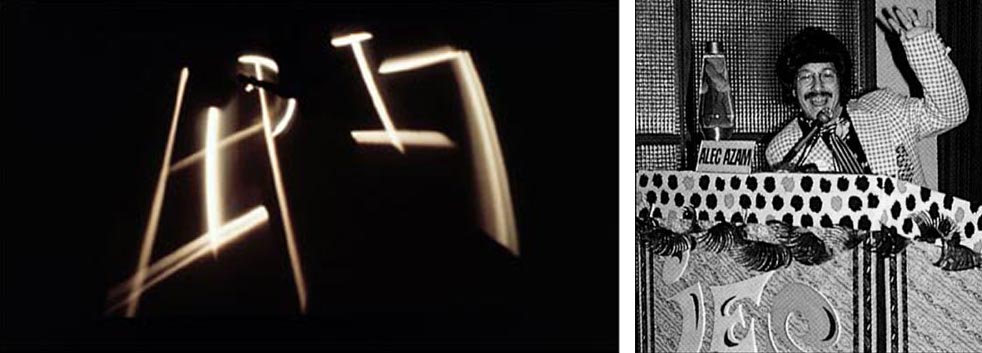
1997 Recipient
Amanda Bernard
1997 Award of Merit for Research and Analysis
Gregory Terch
Tailored Edge-Ray Design of Specular Reflectors for Constant Luminance Cylindrical Sources
Gregory received an Award of Merit for his thesis work on the design of luminaire reflectors and the issues involved. His research included both optical design and radiative transfer for light calculations. His research was significant as it improved the accuracy and computation time of lighting calculations which in turn enhances design and presentation tools used throughout the industry. His work created new reflector design procedures that offer improved optical control, increased efficiency, and reduction in glare. In addition his work created new optical design procedures that are applicable to numerous and diverse sources and will eventually establish a marriage between optical design and radiative transfer for the design of reflectors with diffuse and non-diffuse reflecting materials.
Click on Image for larger view
1998
1998 Recipient
Alicia Wirt
While studying painting in the Yale MFA program, Alicia’s work moved into a direction where reflected light from painted surface replaced the traditional painting on canvas approach.
Her pieces have become intertwined with both architecture and sculpture. Using a variety of simple materials such as paper, cardboard and wood, the blending and intensity of color is dictated by the distance between a painted surface and the wall or another reflective surface.
The grant was used to extend her exploration of reflected light from painted surfaces to include materials such as cast aluminum, steel and fiberglass as shown in the image below.
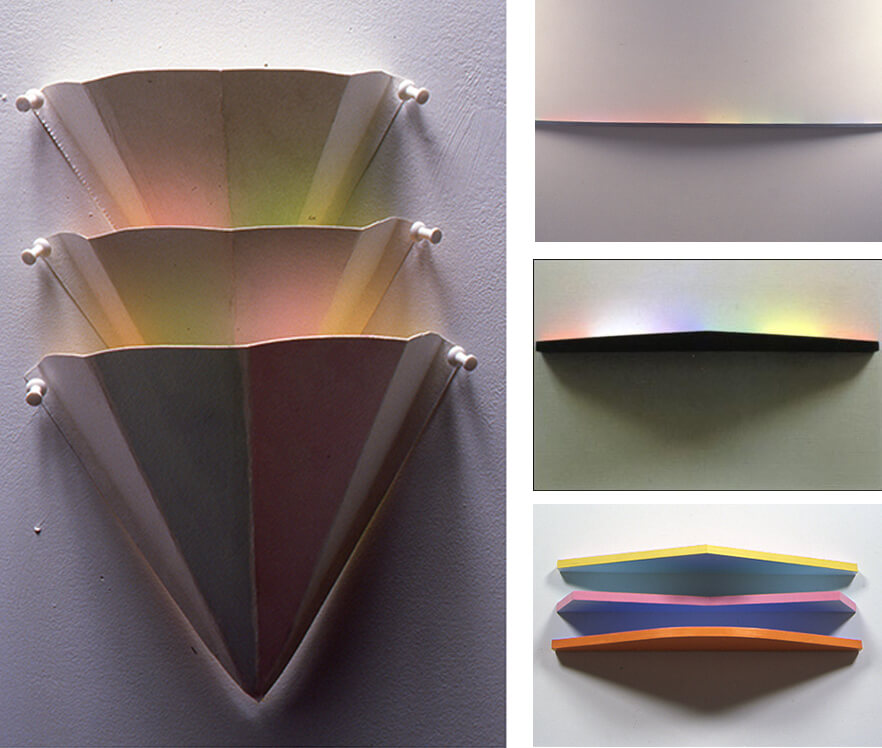
1998 Recipient
Michele Brody

Containment/Sustainment Series
In 1998, Michele Brody was awarded a Grant for her use of light in sculpture. The germination, growth and decay of living matter within particular settings creates a reflection on the movement of time as well as the day to day nature of survival and change. By combining this action within the creation of installations that flow into and around existing spaces like water, she concentrated on creating a sense of elegance out of the simplest of gestures with light.
Continuing her Containment/Sustainment Series on the nurturing and destructive power of light, Michele built a tube-shaped glass and steel structure to contain a water, aeration and light source. She showed her works in a gallery in New York’s Soho, courtesy of the Grant.
1998 Award of Merit Recipient
Heidi Kumao
Cinema Machines
Ms Kumao received an Award of Merit for her work on “cinema machines” for intimate installations. In each tableau, a sabotaged household object is fitted with a zoetrope-like projecting mechanism and a set of photo transparencies. Each hybridized projector presented a short cinematic loop of a simple task or gesture repeatedly obsessively. The sculptural objects frame the images, illuminating the complexities of compulsive behavior, discipline, and non-verbal communication that takes place in these seemingly routine events. By exposing the physical apparatus which drives the bodies into action, she drew a parallel between the machinery and the mechanisms of our unconscious: defense mechanisms, thinking patterns, self control, dreams, or impulses.
Each of her works utilizes light to create the illusion of movement through the principle of the “persistence of vision.” Darkened spaces are activated by the presence of a light emitting culture which speaks with its voice of repeating imagery.
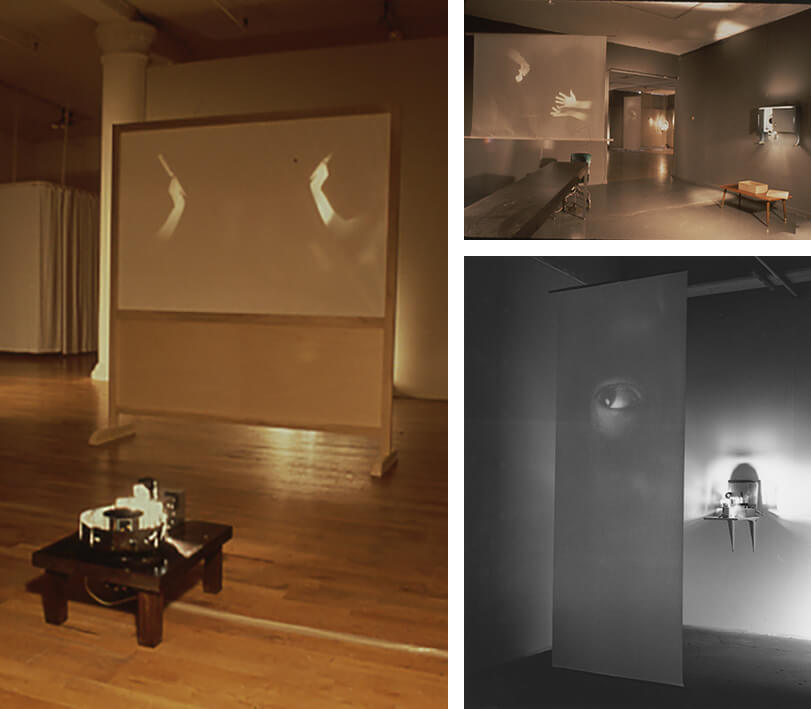
1998 Award of Merit Recipient
Sandy Stannard
1999
1999 Recipient
Julianne Swartz
In 1999, Julianne Swartz received an award for her study of light and shadow. The pieces on the top are physical; the pieces on the bottom are shadows.
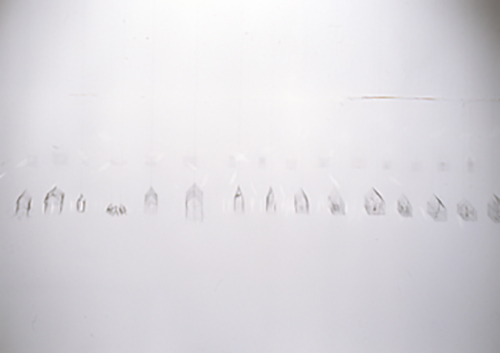
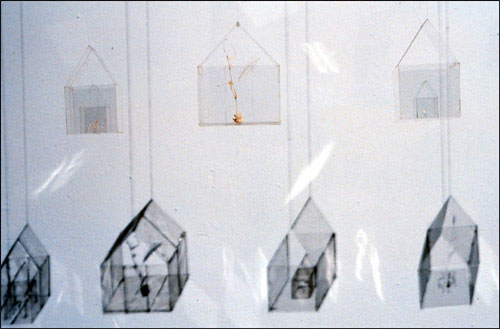
2000
2000 Recipient
Carlos Inclán
In 2000, the Grant was awarded to Carlos Inclan, for his work on an elevator installation using dichroic glass filters and fiber optics.
2000 Recipient
Brad Koener
The Grant was given to Brad Koerner for his proposal using luminescent media to create an interactive, luminous environment.
2001
2001 Recipient
Yukio Kobayashi
Yukio Kobayashi received a Grant for her innovative work in developing a teaching kit to introduce the wonders of light to grade school children. Now senior designer at Nulux, continues to explore light and meaning in her light art installations which have been shown at galleries in New York.
Click on the images to view larger
2001 Award of Merit Recipient
Scott Santoro
Scott received an Award of Merit for developing holographic elements suitable for use in architectural luminaries. Numerous researchers had assure that int would not be possible to overcome the problems of chromatic dispersion and high manufacturing costs. After five years of research, Scott succeeded with his invention of kinoform diffusers (US patent pending in 2001) which provided an optical material, called MesoOptics, whose unique optical properties are ideally suited for architectural luminaries. Scott further distinguished himself by developing no less than sixteen entirely new classes of luminaries, daylighting systems, and passive solar collectors (US patent pending in 2001) based on this material.
Click on the images to view larger
2001 Award of Merit Recipient
Jeff Gerwing and Rodrigo Manriquez
Jeff and Rodrigo won an Award of Merit for their design and mockup of the Tower for Discovery Communications.
2002
2002 Recipient
Margaret Maile
Margaret Maile received a Grant for her thesis examining the nature of the collaboration between lighting consultant and architect, focusing on a historical examination of Kelly’s work with Philip Johnson and Mies Van Der Rohe on three projects done in the period between 1948-1958.
Click on the images to view larger
2002 Recipient
Jonah Freeman
Jonah Freeman received a Grant for his work with light both as a physical property and as a theatrical device. The work manifests itself as sculptures that simulate metropolitan interiors and cinematic environments using lights.
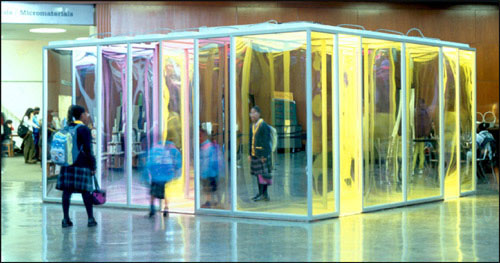
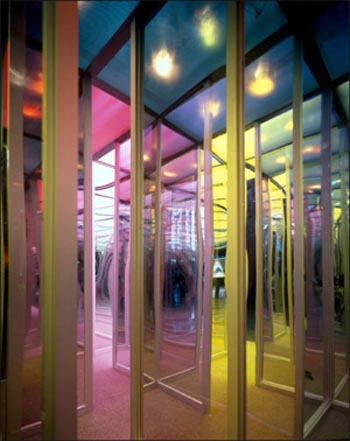
2003
2003 Recipient
Katherine Bennett
FireFlights
Ms. Bennett received a Grant for her creative approach to interactive light art environments. Her proposed project FireFlights is composed of 150 homemade glow-in-the-dark kites, and flown by various people within a defined area creating a moving field of shapes and lines. The goal was to be an outdoor interactive light installation to take place on the border of Toledo, Ohio, and Lake Erie. It was geared towards children and their parents, kite enthusiasts and anyone interested in taking part of the event. FireFlights would bring people together that may not normally meet or interact by a universal experience of art and play.
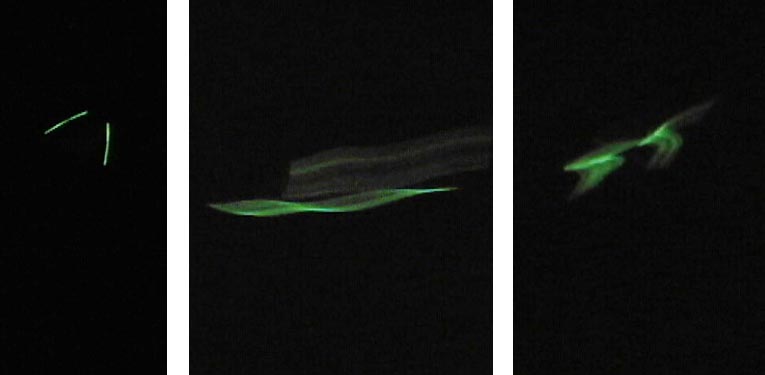
2003 Recipient
Jeffrey Porter Boynton
Mr. Boynton was awarded a Grant for his research and application of sustainable lighting design. The purpose of his design work is to develop social awareness and integrate an ecological consciousness through interaction with light.
Click on images to view larger
2006
2006 Recipient
Jason Robbins
Jason Robbins received a Grant for his investigations into the ways a sighted person and a visually impaired person perceive and move through the same space.
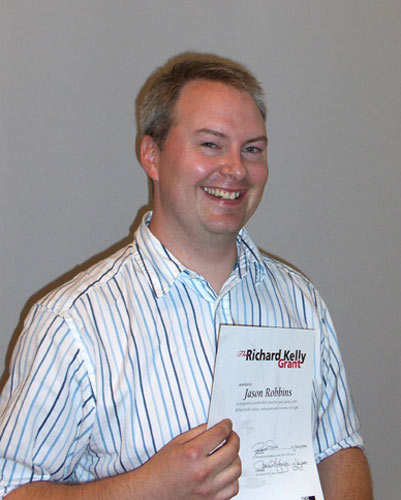
2007
2007 Recipient
Mark Owen Naylor
Innovative Use of Selectively Fluorescent Glasses for Two Dimensional Imaging
Mark was awarded a grant for his work with luminous art created with fluorescent rare-earth doped glass and sequential UV excitation.
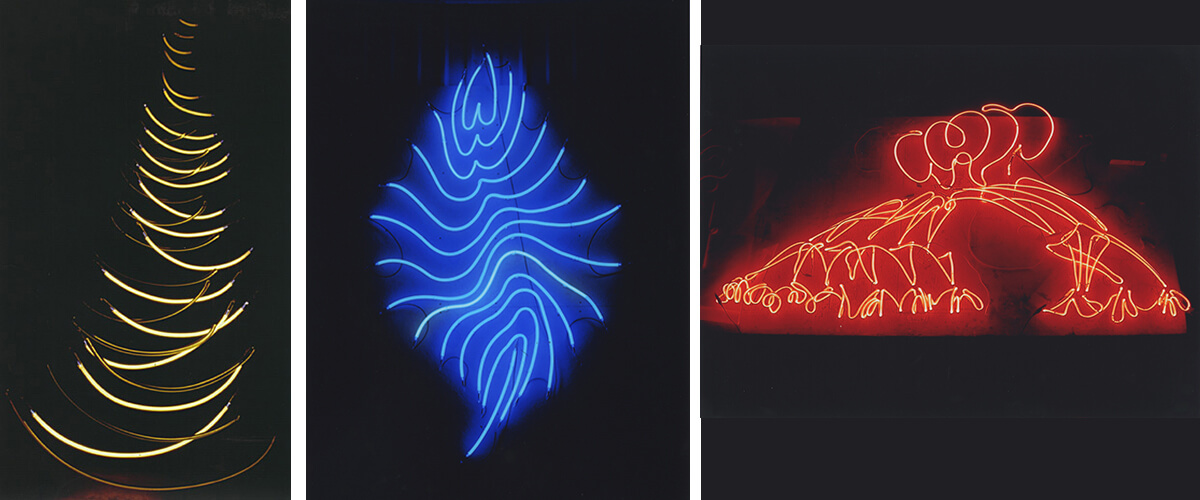
2007 Recipient
Craig O. Spring
Perception of Luminance Uniformity
Craig was awarded a grant for his work studying metrics applied to the perception of luminance uniformity.
Click on Images for larger view
2007 Recipient
Adriana Lira-Oliver
Indoor Illumination for the Stimulation of the Human Circadian System
Adriana was awarded a grant for her work studying the physiological aspects of light and health.
Click on Images for larger view
2008
2008 Recipient
Kevin Van Den Wymelenberg
Luminance-based Lighting and Blind Controls
Kevin Van Den Wymelenberg received a Kelly Grant in 2008 for his doctoral studies on the integration of daylight and electric lighting in buildings. Mr. Wymelenberg’s thesis on “Luminance-based Lighting and Blind Controls” was based on a proposal to develop an advanced control logic designed to accommodate user preferences for visual comfort in daylit spaces.
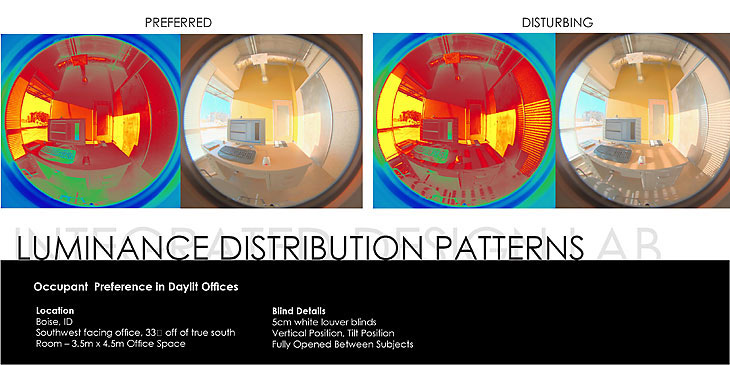
2008 Citation Recipient
Peping Dee Jr.
Peping received a Citation based on a portfolio of works using light, including application design and fixture developments. Mr. Dee’s submittal also included his thesis on the effect of spectrum on discomfort glare.
2009
2009 Recipient
Abbey Renfrew
Ms. Renfrew received a Grant for her exploration of the lighting needs for specialized facilities dedicated to the treatment of traumatic brain injury (TBI), a leading injury of soldiers returning from the war in Iraq. Her work has led to the development of preliminary design criteria for patients suffering from TBI and other conditions with symptoms of photophobia.
2009 Recipient
Saiko Terahara
Light Vessel
Ms. Terahara was awarded a Grant for her use of daylight in creating an art medium. Her concept of a “light vessel”, an environment of direct and reflected light which changes according to the time of day and season, explores the relationship between personal experience and the physical world.
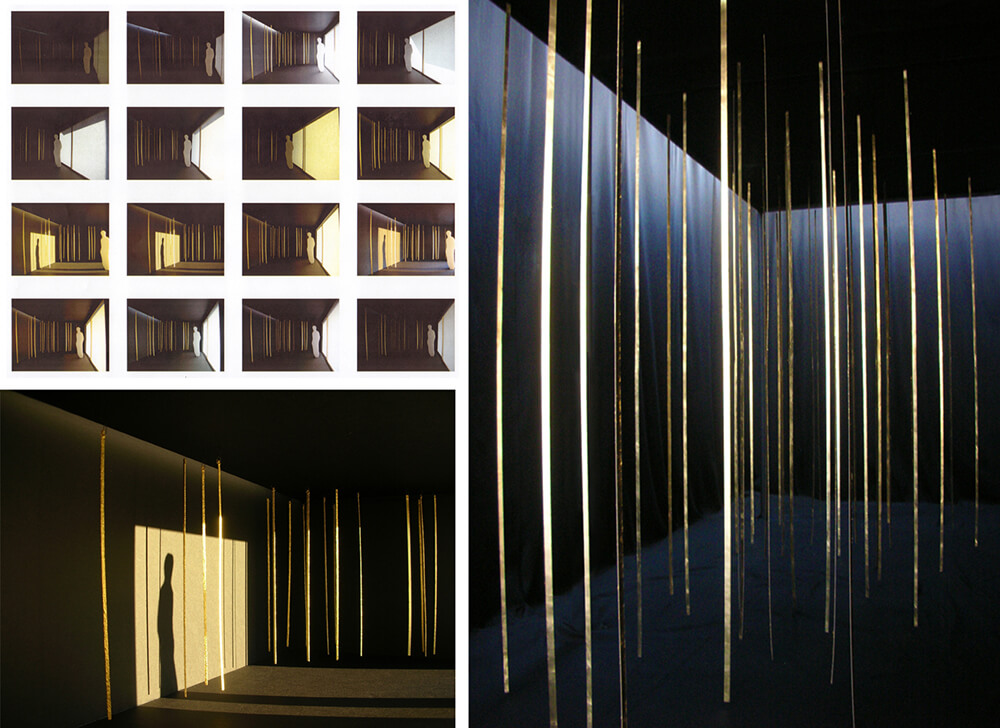
2010
2010 Recipient
Francesca Bastiani
Sheltering Light
Focusing on one of the biggest losses of the homeless—the ability to control the surrounding environment, Ms. Bastiani proposed a portable rechargeable and changeable lighting fixture as part of a pillow, blanket, sleeping bag, or back pack, for use both in and out of shelters.
Click on Images to view larger
2010 Recipient
Maja Petric
The Crack
“The Crack” is a fabricated wall programmed to crack through constant contraction and expansions of space between motorized fragments in the wall, producing a light slot that varies in real time.
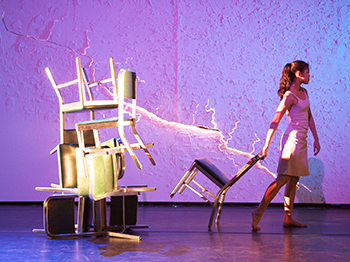
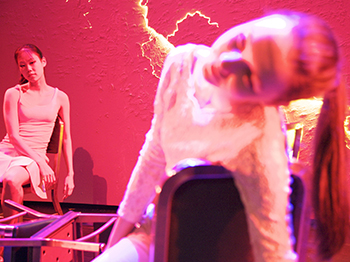
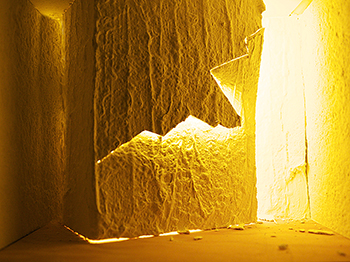
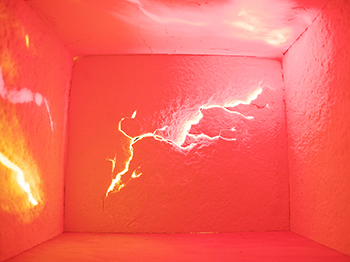
2011
2011 Recipient
Antonia Peon-Veiga
Drawing Light: Processing the Lit Environment
Antonia Peon-Veiga received a grant for her exploration of an universal graphical language to express the technical and creative aspects of lighting design in a diagrammatical form, representing light within a framework of space and time.
Click on Images to view larger
2011 Recipient
Ben McDonald
Sensitive Apertures
Ben McDonald received a grant for his development of “Sensitive Apertures,” a system of distributing natural light using ceramic building blocks and refractive glass in an enclosed system that minimizes thermal issues while providing desired light levels to the building interior.
Click on Images to view larger
2014
2014 Recipient
Antony Kim

2016
2016 Recipient
Amir Nezamdoost
Manual blinds are quite common in spaces designed for daylighting and it is well accepted that blinds position and operation substantially impact on annual energy consumption in buildings. Yet they are typically not included in energy modelling and often not considered in daylight modelling. This is in part because leading candidates of manual blind use patterns in energy and daylight modelling are not reliable enough and have seen unrealistically too active (with high values in number of blind movements) in simulation than what is generally expected from a manual blind.
We are now seeking to develop a consensus-based manual blind use pattern in order to improve the accuracy of predicting energy and daylighting simulation for the industry and to be implemented in codes, reach standards, or design decision making.

2017
2017 Recipient
Belal Abboushi
Investigating Occupant’s Visual Comfort and Preferences Towards Sunlight Patterns in Daylit Offices
In addition to influencing occupant’s visual comfort, recent studies found that sunlight can expedite recovery for depressed patients, boost the body’s vitamin D supply, and regulate melatonin production. On the other hand, in psychological studies, fractal patterns were found to be more visually interesting than other types of patterns. However, no studies have investigated visual interest of spatially projected fractal patterns in space.
Belal Abboushi used the grant to support an on-going field study in San Francisco over summer and fall terms of 2017. Particularly, the grant would help defray cost of equipment and travel to and from this location.
Click on Images to view larger
2017 Recipient
Yue Liu
Computing Long-term Daylighting Simulations from High Dynamic Range Photographs Using Deep Neural Networks
Yue Liu extensive research focused on rapid modeling of daylit environments. Her research goal was to improve the current lighting simulation technologies by increasing the efficiency and usability and demonstrate a multidisciplinary framework to apply machine learning in lighting simulation. Machine learning has been successfully applied to various fields, but it has not been utilized in the field of architectural lighting. She recognized the great potential to apply emerging data science technologies into building analysis. The Grant provided her the opportunity to purchase the equipment she needed and to attend conferences to share her research outcome, and receive feedback from lighting professionals.
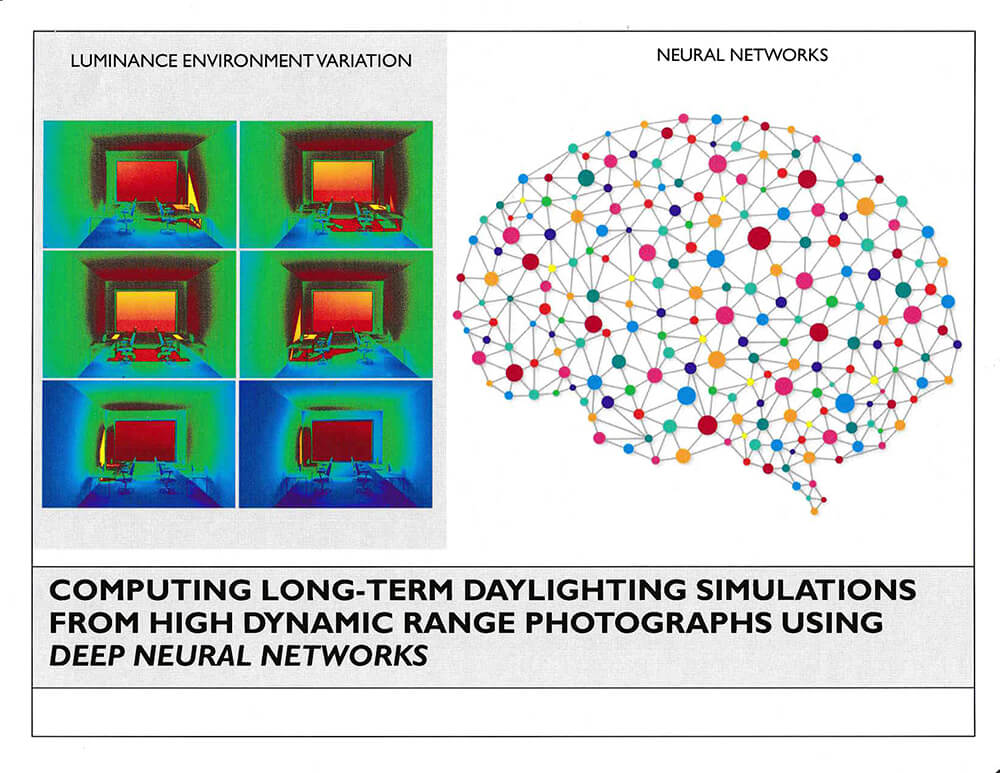
2017 Recipient
Julian Wang
Machine Learning-based Real-time Visual Comfort Monitoring on Indoor Lighting in CCRCs
A report from the 2014 U.S. Census Bureau indicates that at that time, there were approximately 4,800 continuing care retirement communities (CCRCs) with over 640,000 residents in the U.S. Many studies have reported that poor indoor lighting quality is related to increases in eyestrain, headache, fatigue, anxiety, depression, etc. Because up to 90% of a typical senior’s time is spent indoors in a retirement community, monitoring residents’ actual lighting quality are of special importance to senior healthcare. Our survey on regional CCRC healthcare teams in Ohio, Kentucky, and Indiana revealed that 47 of total 52 CCRCs perform periodical on-site visits on indoor lighting conditions using surveys, interviews, and certain photometric measurements. However, these methods are normally non-real-time, non-continuous, bulky, costly, and passive. Comparatively, the development of real-time visual comfort and lighting quality monitoring is so far behind the development of other indoor environmental quality (i.e. air quality, temperature, noise) monitoring that has been real-time, interactive, and widely used in healthcare facilities for long time. The key hurdle to develop such technology design for indoor lighting is the complexity of visual comfort measurements and the variety of user lighting needs of different activities. Traditionally, the use of physical prototypes, scale models, advanced computational simulation, as well as in-situ photometric measurements has been a source of valuable, real-world information about lighting quality and visual comfort. However, such an approach relying on high-level computation, complex measurements, and/or camera-based HDR images cannot be used for the real-time monitoring objective. This work explores an alternative approach that uses machine learning algorithms and physical-based photometric measurements by wearable sensors to achieve approximation of visual comfort indicators, which will meet the aforementioned needs.
The grant furthered Julian Wang’s academic research, on-campus teaching, and outreach activities in lighting along with the purchase of materials and supplies needed to set up new pilot lighting projects in his courses.
Click on Images to view larger
2019
2019 Recipient
Jessica Collier
Ms. Collier received a grant for her work examining the relationship between objective color metrics and subjective color preferences.
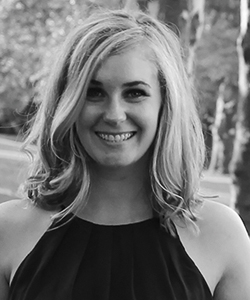
2019 Recipient
Tony Esposito
Tony Esposito, PhD, working at Lighting Research Solutions received a grant for his scholarly work on color discrimination, defining the limitations of current metrics and developing a computational tool to aid in the establishment of accurate predictors for applied lighting. He is the Head Research Scientist at Lighting Research Solutions LLC in Somerville, MA, a company he founded.
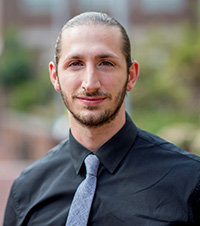
2020
2020 Recipient
Trinetra Manickavasagam
Trinetra Manickavasagam recently received her MFA in Lighting Design from Parson School of Design. She received a Grant for her work that examines the perception of source color changes in LEDs while dimming. Manickavasagam applied an evidence-based design process to determine if commercially available luminaires change color temperature when operated at different intensities. She intends to continue her research in order to evaluate whether her measured results can be correlated with viewer perceptions.

2020 Recipient
Yulia Tyukhova PhD, LC,
Yulia Tyukhova PhD, LC, received a Grant for her research in the fields of discomfort glare and lighting quality. Dr. Tyukhova is an independent researcher who has been a leader in the area of Discomfort Glare in the Outdoor Nighttime Environment (DGONE). Her work has included measuring and defining discomfort glare from bright light sources in high contrast environments. She was able to use this knowledge to develop a patented luminaire that minimizes glare potential. Dr. Tyukhova has also been an active spokesperson and educator on the topic of DGONE and has delivered an IES Education Webinar on the subject.
